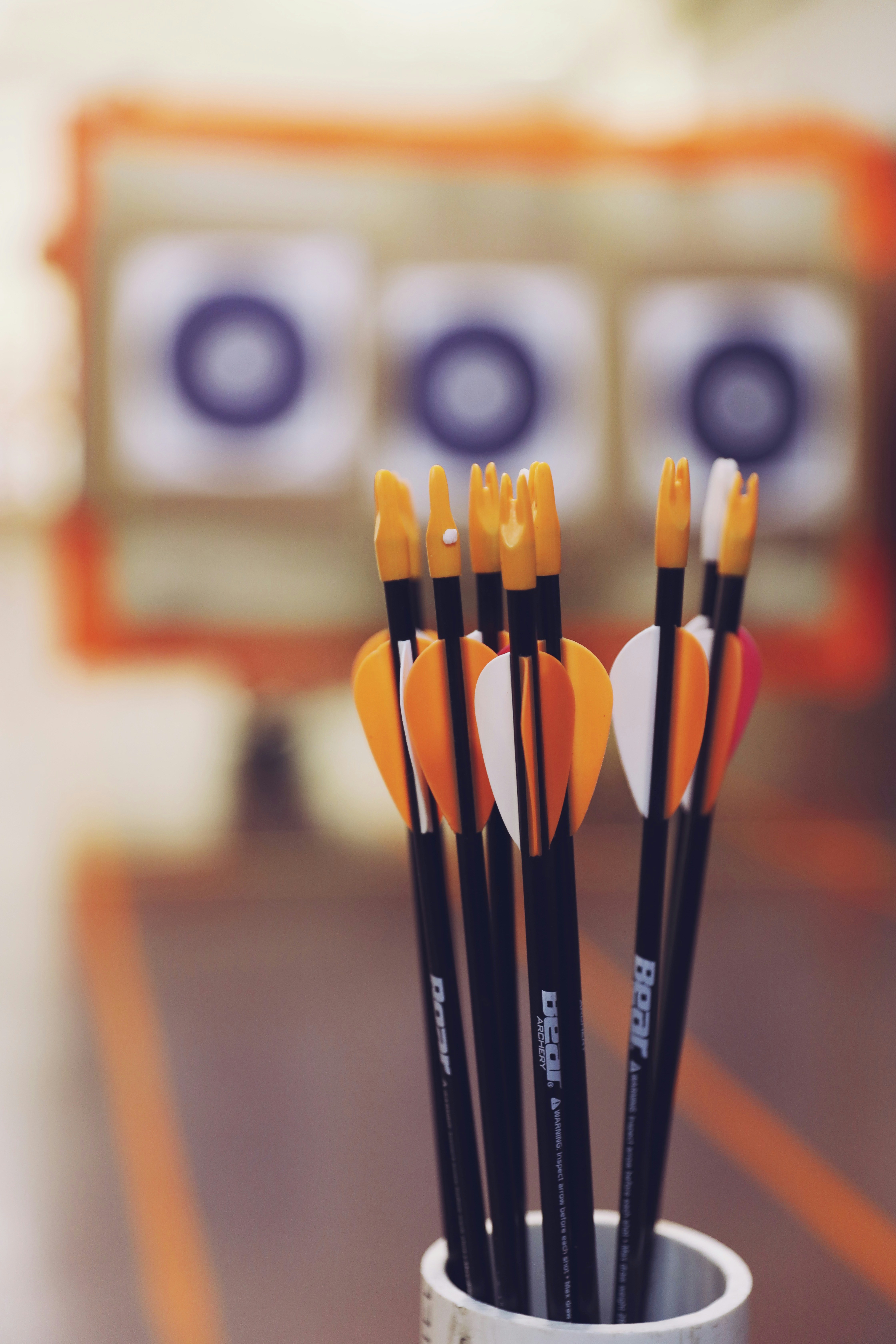Archery Arrow Tag combines the excitement of archery with safe, foam-tipped arrows to create a fun, competitive game. However, as with any activity involving projectiles, strict safety protocols and proper gear are essential for players of all ages. This guide explains the mandatory protective gear, how to create a secure playing field, and the core rules to follow during play. Detailed guidelines help ensure a safe environment and provide instructions for both young players and adults.
Key Takeaways
- Protective gear like face masks and arm guards is vital for reducing injury risk.
- A secure playing area with clear boundaries is essential for safety.
- Core rules, safe shooting practices, and age-specific adjustments help maintain a safe environment.
- Pre-game briefings and proper post-game equipment care further protect players and extend gear lifespan.
Understanding Mandatory Archery Arrow Tag Protective Gear
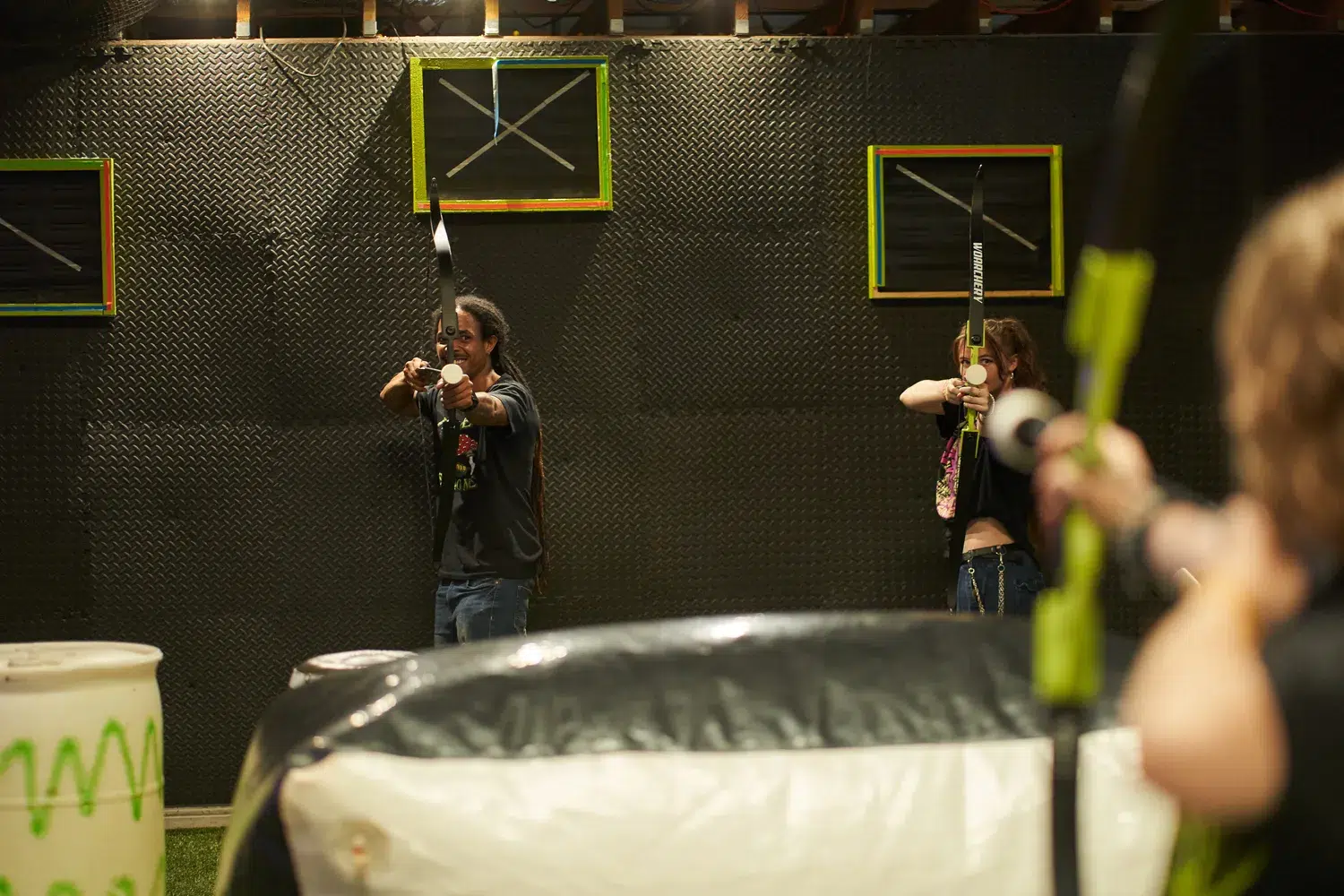
Protective gear is non-negotiable in Archery Arrow Tag. Proper face masks, armguards, and foam-tipped arrows reduce the chance of injury. Each piece of gear plays a role in safeguarding players during high-action moments. Frequent inspections and secure fitting gear ensure maximum protection without hindering movement. Safe gameplay starts before the first arrow is ever released.
Correct Fitting and Use of Face Masks
Face masks must be snug without limiting breathability or sight. They shield eyes and facial areas from direct hits, especially during sudden close-range interactions. Soft padding and adjustable straps improve comfort for longer matches. Players should inspect masks for cracks or wear before each session to maintain top-tier protection.
Importance of Armguards for All Participants
Armguards defend forearms from bowstring contact and stray shots. They absorb impact from the bow and arrow, helping to prevent scrapes and bruises. A good armguard should fully cover the lower arm and be adjustable for a secure fit. Lightweight materials help maintain mobility without sacrificing safety.
Optional Chest Protector Recommendations
Chest protectors provide an added safety layer, especially for younger or new players. They help cushion unexpected impacts from incoming arrows. While optional, they are beneficial during more aggressive rounds or when players are less experienced. Choose models that don’t restrict movement or interfere with the draw of the bow.
Inspecting Arrow Foam Tips Before Each Game
Foam tips are designed to reduce impact while still offering the thrill of combat archery. Before each game, check that all tips are secure and free from cracks. Loose or damaged tips can compromise gameplay and increase the risk of accidents. Replacing worn tips promptly ensures safer team challenges.
Ensuring Bows Are in Good Working Order
Every bow should be tested for string tension and overall condition. Frayed strings or loose components pose risks during play. Players should be trained to recognize issues and report gear concerns before the game begins. Proper maintenance of bow and arrow gear prevents misfires and supports smooth gameplay.
Establishing a Secure Playing Field for Archery Arrow Tag

Establishing a safe space for play is key to preventing injuries. The arena should be clear of hazards, well-lit, and thoughtfully arranged with space for strategic play. Proper boundaries help avoid accidental hits outside the designated area. With the right setup, players can focus on the thrill of adventure and team building.
Clearing the Area of Potential Hazards
Before each game, inspect the ground for items like stones, wires, or uneven surfaces. Clear fields reduce the chances of tripping or losing footing during a sprint. Indoors, avoid wet patches or cluttered corners. A smooth layout encourages fluid movement and enhances safety for all.
Defining Clear Boundaries and Buffer Zones
Boundaries should be clearly marked with cones, flags, or tape. Buffer zones between play and spectator areas add another layer of protection. These borders help guide player flow and prevent unintentional exits from the arena. Keeping action contained ensures safer combat archery rounds.
Setting Up Obstacles and Bunkers Safely
Bunkers should be lightweight, cushioned, and free of sharp edges. Space them evenly to prevent bottlenecks or collisions. Proper placement supports game flow and offers players safe spots for cover and planning. A well-designed course boosts excitement without compromising safety.
Verifying Adequate Lighting for Visibility
Whether indoor or outdoor, lighting should eliminate shadows and ensure visibility of all gear and players. Poor lighting affects reaction time and aim. Ensure each corner of the field is well-illuminated to help players see clearly and avoid unnecessary hits.
Weather Considerations for Outdoor Play
Outdoor matches demand flexibility. High winds, rain, or heat can affect arrow control and player comfort. Schedule matches during calm, mild weather to ensure gear works effectively and players stay safe. Always have a backup indoor option when planning outdoor events.
Implementing Core Archery Arrow Tag Rules for Safe Play
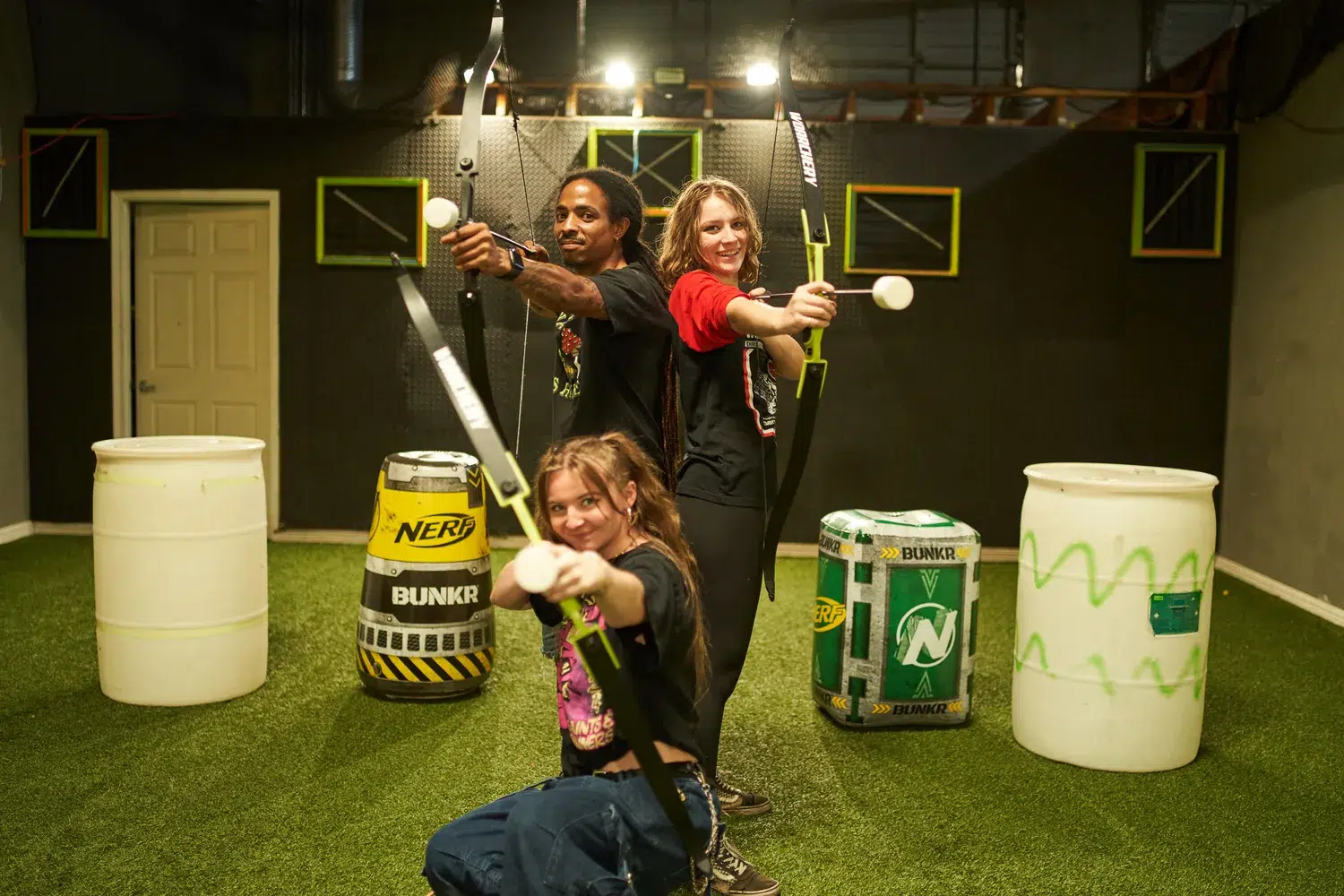
Clear gameplay rules are essential for injury prevention and smooth team dynamics. From shooting range limits to respectful interaction, following these rules creates an enjoyable environment. Reinforcing them at the start of each session ensures all players understand expectations.
Maintaining a Minimum Engagement Distance
Players must stay a few feet apart during shooting. This distance ensures foam-tipped arrows don’t cause discomfort or injury. Keeping space also allows better movement and visual clarity. Coaches and referees should constantly monitor spacing throughout each round.
Prohibiting Shots to the Head or Neck
Players must avoid aiming for the head or neck at all times. These areas are sensitive, even with gear. Training players to aim for the torso or legs ensures safer targeting and fairer gameplay. Clear communication reinforces the importance of accurate, responsible aiming.
Safe Procedures for Retrieving Arrows
Arrow retrieval should only occur during pauses under supervision. Rushing into the field during active play risks accidents. Assigning collection roles or designated collection times prevents injuries and confusion. Clear retrieval routines help maintain order and protect everyone on the field.
No Shooting at Non-Players or Outside the Arena
All shots must stay within the game boundaries. Arrows aimed at bystanders or stray areas can lead to injuries. Repeated reminders help players keep their focus and shots contained. Signs and barriers around the arena reinforce this rule visually.
Pausing Game Play for Safety Concerns
Referees should immediately pause gameplay if hazards appear. Loose gear, collisions, or technical issues require quick attention. Temporary halts allow players to reset and prevent escalation. Everyone benefits from a culture that values safety above speed.
Age-Specific Archery Arrow Tag Safety Adjustments
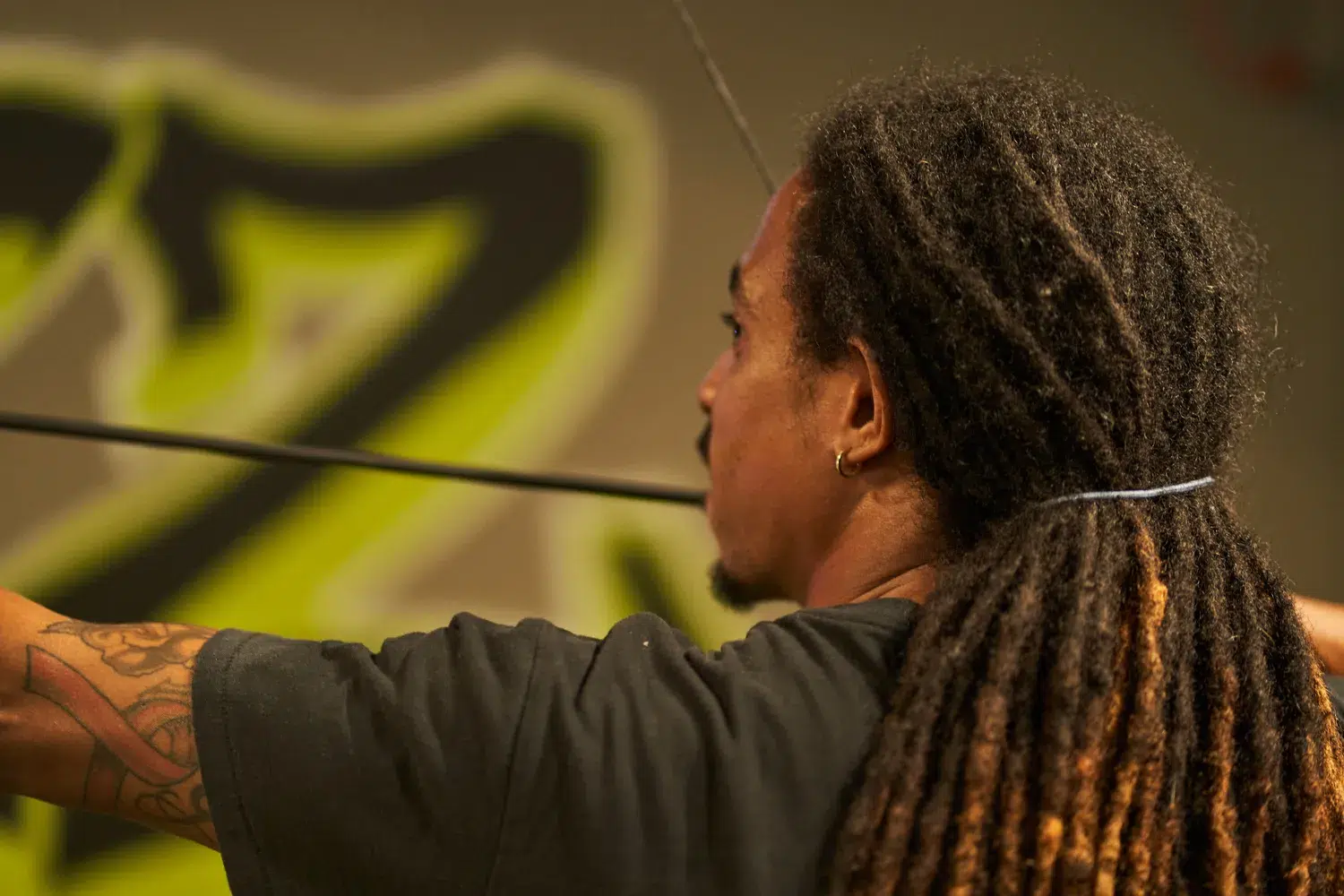
Safety measures should be tailored based on the player’s age and skill level. Kids and teens require extra supervision and adjusted gear, while adults can handle more advanced gameplay with standard equipment. Creating age-appropriate guidelines ensures every player enjoys the thrill without unnecessary risk.
Modifying Rules for Younger Player Safety
Younger players need rules that slow down gameplay and minimize impact. Increase engagement distance, limit the number of players per team, and assign adult supervisors. These modifications reduce the risk of overwhelm while teaching kids safe combat archery skills in a controlled setting.
Appropriate Equipment Sizing for Different Age Groups
Lighter bows, smaller face masks, and adjustable gear are essential for children. Adults can use standard gear, but everyone benefits from proper fitting and comfort. Ensuring equipment is age-appropriate enhances safety, ease of use, and long-term enjoyment.
Supervision Levels Required for Youth Participants
Games involving kids should always have one or more trained supervisors present. These adults can correct unsafe behavior, manage disputes, and guide gameplay transitions. More supervision leads to a smoother and safer experience for younger groups engaging in archery fun.
Communicating Safety Guidelines to Children Effectively
Children absorb rules better through visual cues and simple demonstrations. Use diagrams, gear models, or even practice rounds to reinforce safety. Repeat instructions often to ensure understanding and keep younger players engaged and alert throughout the session.
Ensuring Understanding for Participants With Varying Abilities
Players with different physical or cognitive abilities may need special gear or custom instructions. Assess each participant’s needs and assign a buddy if necessary. Inclusive planning ensures everyone has access to safe and enjoyable archery adventure.
Pre-Game Archery Arrow Tag Safety Briefings, and Preparation
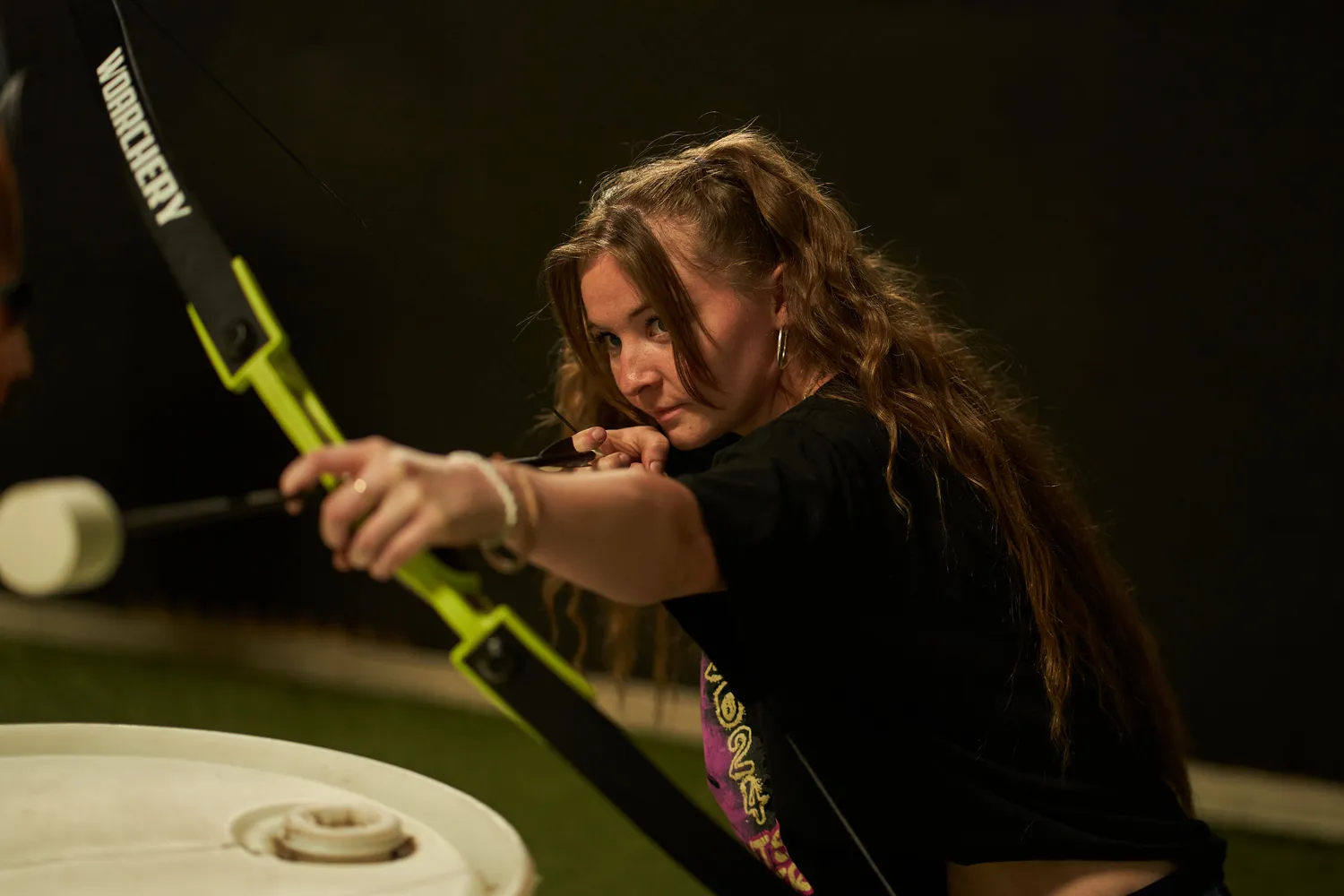
Before the bow and arrow come out, players must understand the rules, responsibilities, and safety expectations. Pre-game orientations provide a structured time to review guidelines and address concerns. These meetings promote communication and ensure readiness before gameplay begins.
Conducting Comprehensive Safety Orientations
Orientations should cover gear handling, movement rules, and emergency response procedures. Keep the tone clear and engaging so players of all ages stay focused. Consider walkthroughs of the field to reinforce safety zones and highlight potential hazards before starting the match.
Demonstrating Proper Shooting Form and Technique
Show players the correct stance, grip, and release method to reduce injuries and improve accuracy. Encourage questions and give feedback to help build confidence. Practicing with unloaded bows first can ease new players into the rhythm of combat archery safely.
Leading Warm-Up Activities to Prevent Injuries
Simple exercises like jumping jacks, arm circles, and dynamic stretches prepare muscles for sudden movement. Focus on joints and core activation to increase agility. Warming up also boosts alertness, helping players stay aware and avoid missteps.
Confirming All Participants Understand Emergency Signals
Teach everyone to recognize visual or audio signals that indicate timeouts, safety alerts, or emergencies. Run a short drill if needed to practice stopping quickly. Knowing these signals keeps everyone safe if unexpected events arise mid-game.
Reviewing Fair Play and Sportsmanship
End the briefing by emphasizing teamwork, mutual respect, and fun. Explain how following the rules not only keeps the game safe but also enjoyable. Setting this tone early helps reduce conflicts and creates a cooperative game environment.
Post-Game Archery Arrow Tag Procedures and Equipment Care
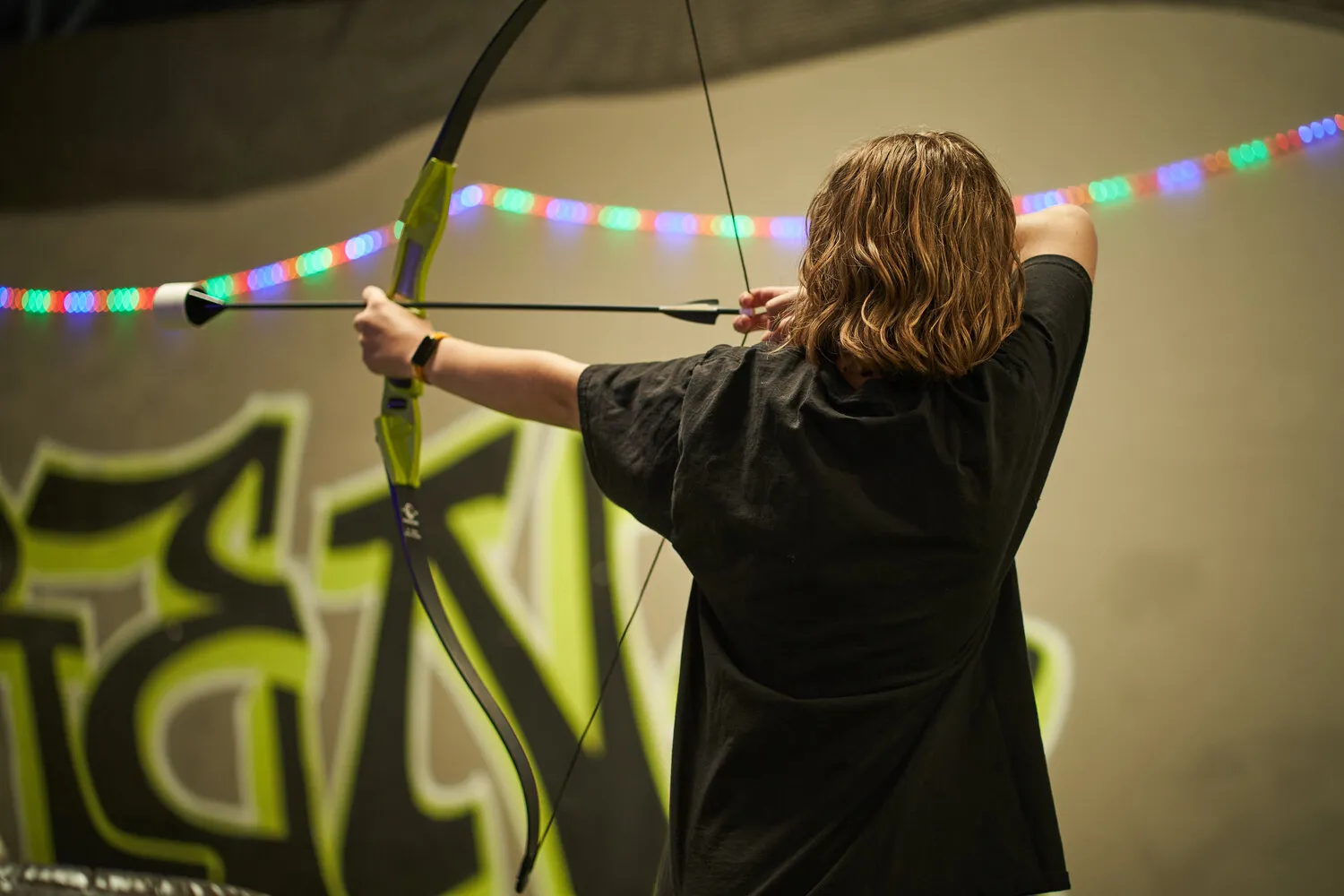
After each match, post-game procedures are just as important as pre-game ones. Proper cleanup, equipment inspection, and cool-down routines maintain safety and extend the life of the gear. A smooth wrap-up reinforces responsibility and encourages long-term engagement with the sport.
Collecting All Arrows and Equipment Systematically
Assign a collection team or organize a systematic walk-through of the play area. Avoid letting players scatter during cleanup to minimize missed items or confusion. Group collection routines protect both players and gear after a fast-paced session.
Inspecting Gear for Damage After Sessions
Check each bowstring, arrow tip, mask, and strap for signs of wear. A damaged foam tip or loose face mask can be dangerous next time. Regular inspections ensure that issues are addressed promptly, keeping future games safe and enjoyable.
Reporting Any Injuries or Equipment Failures
Have a quick check-in after every session where players can report injuries or gear issues. Even minor bruises or broken strings should be noted. This helps refine safety rules and ensures repairs are done before the next round of fun.
Storing Archery Arrow Tag Equipment Properly
Dry, cool, and secure storage areas are best for maintaining gear. Use labeled bins or racks to keep bows, masks, and arrows organized. Proper storage ensures quicker prep next time and reduces wear from poor handling.
Providing a Cool-Down Period and Hydration Access
Finish each game with light stretching and access to water. Cool-down routines lower heart rates and reduce soreness. Hydration keeps players refreshed and contributes to overall wellness and safety, especially after high-energy matches.
Frequently Asked Questions
How important is it to use a face mask during Archery Arrow Tag?
A well-fitting face mask is essential as it protects the face and eyes from foam-tipped arrows, greatly reducing the risk of injuries.
What should I do if I notice damaged equipment during gameplay?
Immediately report any damaged gear or arrows, pause the game if necessary, and repair or replace the equipment before resuming play.
How are safety rules modified for young players in Archery Arrow Tag?
Young players follow rules with longer engagement distances, age-appropriate equipment, enhanced supervision, and simplified instructions for better clarity.
Why is it necessary to inspect arrow foam tips before each game?
Regular inspection ensures that the foam tips remain securely attached and undamaged, helping to prevent accidental detachment during play.
What is the best way to communicate safety guidelines to participants with varying abilities?
Tailor the briefing to each participant’s needs, using clear demonstrations and additional supervision to ensure full understanding and compliance.
Conclusion
Archery Arrow Tag offers dynamic fun for all ages—from corporate events to family outings. By following these safety guidelines, including using proper protective gear, setting up a secure playing field, and enforcing clear rules, the risk of accidents is minimized. Through comprehensive pre-game briefings, vigilant supervision during play, and careful post-game equipment care, everyone can enjoy a safe and thrilling Archery Arrow Tag experience.

